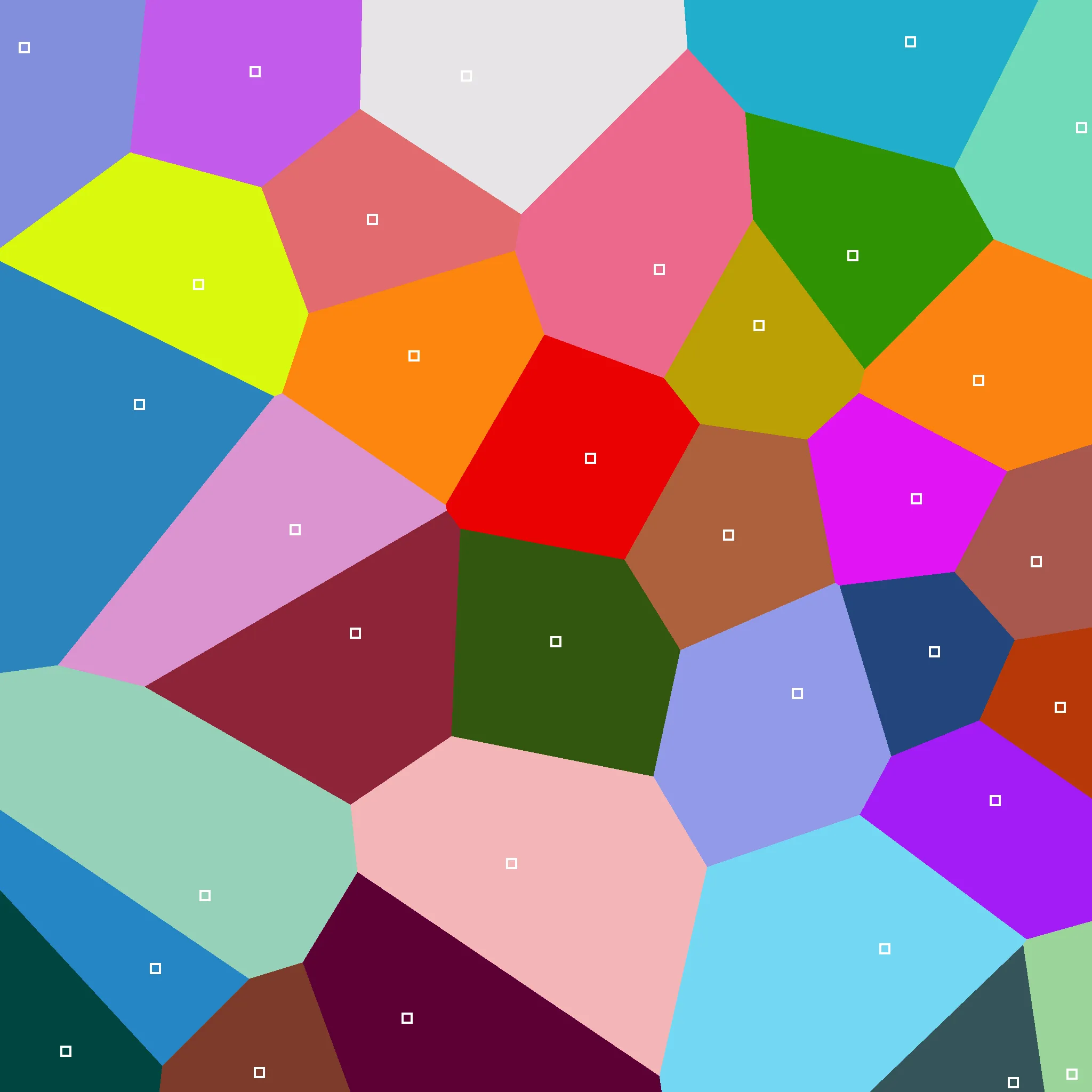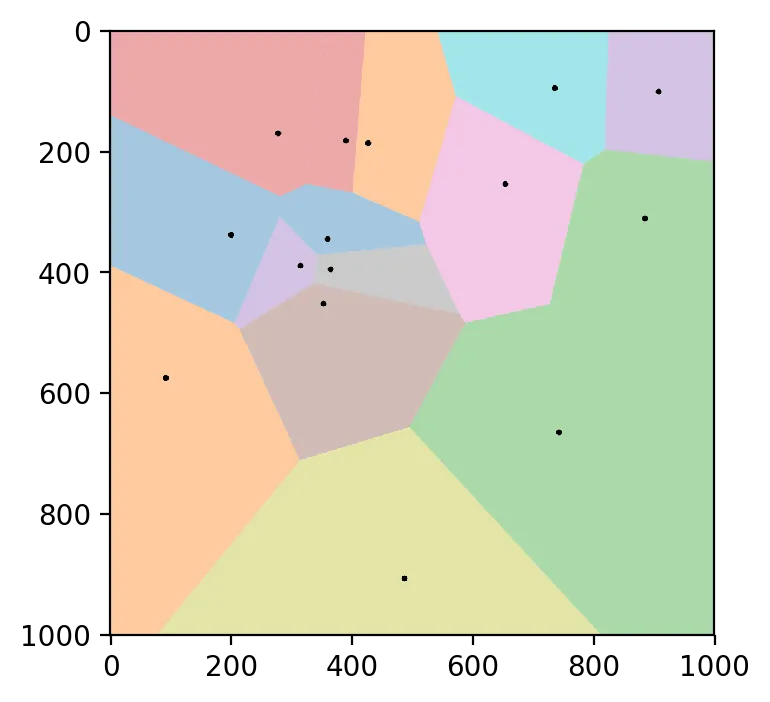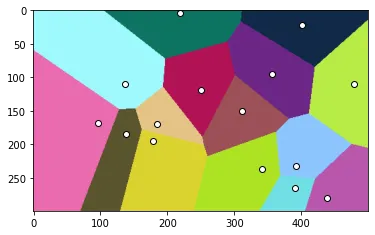我希望能够基于一组中心点和图像大小生成泰森多边形区域。
我尝试了下面的代码,基于https://rosettacode.org/wiki/Voronoi_diagram。
我有所需的输出: 但生成输出需要太多时间。
我也尝试过https://dev59.com/HWIj5IYBdhLWcg3wMinW#20678647,它很快,但我没有找到将其转换为img_width X img_height的numpy数组的方法。主要是因为我不知道如何给scipy Voronoi class传递图像大小参数。
是否有更快的方法来获得此输出? 不需要中心或多边形边缘。
提前感谢。
编辑2018-12-11: 使用@tel“快速解决方案”。 代码执行更快了,似乎中心已经被转换了。可能这种方法在图像上添加了一个边距。
我尝试了下面的代码,基于https://rosettacode.org/wiki/Voronoi_diagram。
def generate_voronoi_diagram(width, height, centers_x, centers_y):
image = Image.new("RGB", (width, height))
putpixel = image.putpixel
imgx, imgy = image.size
num_cells=len(centers_x)
nx = centers_x
ny = centers_y
nr,ng,nb=[],[],[]
for i in range (num_cells):
nr.append(randint(0, 255));ng.append(randint(0, 255));nb.append(randint(0, 255));
for y in range(imgy):
for x in range(imgx):
dmin = math.hypot(imgx-1, imgy-1)
j = -1
for i in range(num_cells):
d = math.hypot(nx[i]-x, ny[i]-y)
if d < dmin:
dmin = d
j = i
putpixel((x, y), (nr[j], ng[j], nb[j]))
image.save("VoronoiDiagram.png", "PNG")
image.show()
我有所需的输出: 但生成输出需要太多时间。
我也尝试过https://dev59.com/HWIj5IYBdhLWcg3wMinW#20678647,它很快,但我没有找到将其转换为img_width X img_height的numpy数组的方法。主要是因为我不知道如何给scipy Voronoi class传递图像大小参数。
是否有更快的方法来获得此输出? 不需要中心或多边形边缘。
提前感谢。
编辑2018-12-11: 使用@tel“快速解决方案”。 代码执行更快了,似乎中心已经被转换了。可能这种方法在图像上添加了一个边距。



